MUSA
Musa
L., Sp. Pl. 2: 1043. 1753; Gen. Pl. ed. 5; 466, 1754; Fl. Pak. @ eFloras.org p. 1; Fl North Amer. @ eFloras.org vol. 22.
Herbs perennial, tufted rhizomatous, stloniferous. Stems remaining short until flowering. Pseudostems composed of closely packed leaf sheaths, more than 60 cm long, base slightly swollen. Leaves large; petiole long, base enlarged into a sheath; leaf blade oblong, unlobed, older leaves often split to midrib, 2-3 m x 0.3-0.6 m. Inflorescence terminal, erect, pendulous or subpendulous, not conical, lax. Bracts green, brown, dull purple or rarely yellow, flat or furrowed, convolute or imbricate in bud, usually deciduous. Flowers in 1 or 2 rows per bract, deciduous; flowers in proximal bracts female (with reduced stamens) or bisexual; flowers in distal bracts male (with reduced gynoecium), female flowers crowded, numerous; bracts of staminate flowers imbricate, forming bud like mass at apex of inflorescence. Compound tepal tubular, soon splitting to base on one side, apex 5-toothed; free tepal inserted within compound tepal and opposite to it. Stamens 5; filaments short; anthers linear, bithecous. Carpels 3, syncarpous; ovary inferior, 3-locular, all locules fertile, ovules many per loculus, placentation axile; style terminal, filiform; stigma 3-lobed. Berries elongate, fleshy, with numerous seeds (except in parthenocarpic forms). Seeds irregularly globose to lenticular.
83 species
Musa x paradisiaca
Musa x paradisiaca
L, Sp. Pl. 2: 1043. 1753; Fl. China @ eFloras.org 24: 317; Fl. North Amer. @ eFloras.org vol. 22; Fl. Pak. @ eFloras.org p.1; keralaplants.in; M. x paradisiaca subsp. sapientum (L.) Kuntze, Revis. Gen. Pl. 2: 692. 1891; M. sapientum L., Syst. Nat. ed. 10(2): 1303. 1759.
Perennial herbs, tufted, rhizomatous. Leaves basal, in several ranks, differentiated into basal sheaths, petioles and leaf blades; sheaths tubular, overlapping, closely packed forming unbranched pseudostems, 3-7 m tall; petiole long, channelled; leaf blade dark grey adaxially and light green abaxially, 1.5-3 m x 30-60 cm long, with a single midvein and many lateral parallel veins; older leaves often split between the parallel veins to midvein; base subcordate to auriculate, apex acute. Inflorescence terminal pedunculate spike, ca. 1 m long, drooping; peduncle thick, rachis glabrous. Bracts open in succession, adaxially deep red, abaxially purple, ovate to ovate-lanceolate, somewhat fleshy, 15-30 cm or more, deciduous. Flowers in 2 rows below each bract; flowers in proximal bracts female (with reduced stamens) or bisexual and male in distal bracts (with reduced gynoecium). Flowers +/- 8 cm long, sessile, bilaterally symmetric. Perianth 5 connate into compound tepal; compound tepal tubular, soon splitting to base on 1 side, apex 5-toothed, 4-5 cm x 1-1.2 cm, purple red on outer surface, cream purple on inner surface, thick, fleshy; one inner median tepal free inserted within compound tepal and opposite to it, 2.8-3.5 cm x 2.2-3 cm, suborbicular to oblong, rolled into hooded sac-like structure, apex mucronate, translucent. Stamens 5, free; one opposite the free tepal absent; filaments 2.3-2.5 cm x 1.5-3 mm, flat, narrow at base gradually becoming broad distally; anthers ca. 2.5 cm long, bithecous, coiled towards apex; reduced in female flowers. Carpels 3, syncarpous; ovary inferior, 3-4 cm x 7-8 mm, 3-locular, many ovules per loculus, placentation axile; style terminal, slender, 4-4.5 cm long; stigma loculate, ca. 5 mm long. Inflorescence with 7 or 8 clusters of berries. Berries erect or slightly curved, oblong, 10-20 cm long, fleshy, pulp sweet; stalk elongate. Seeds absent.
Common Names: Banana; Kela (Hindi)
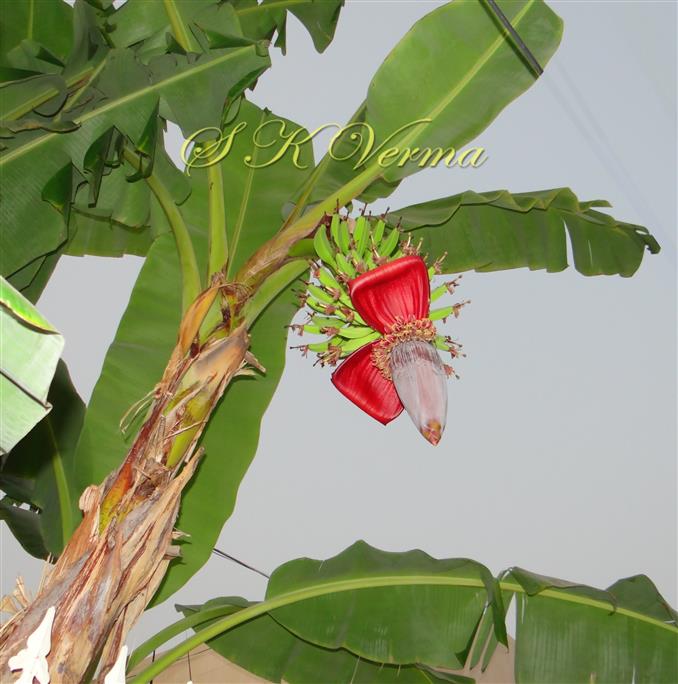
-DSC01116.jpg)
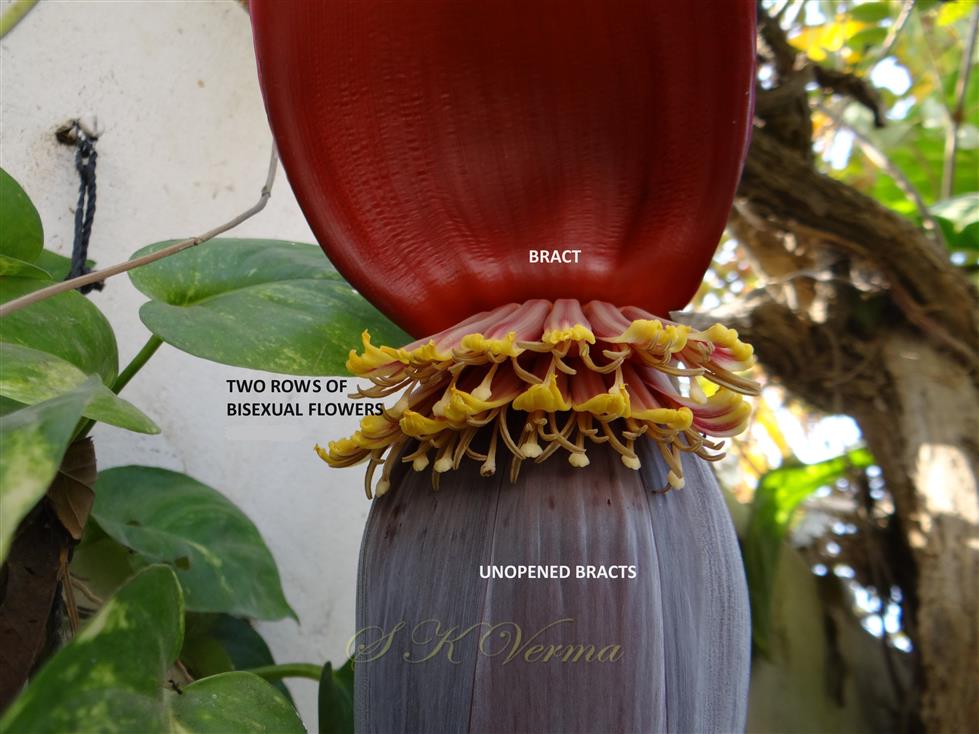
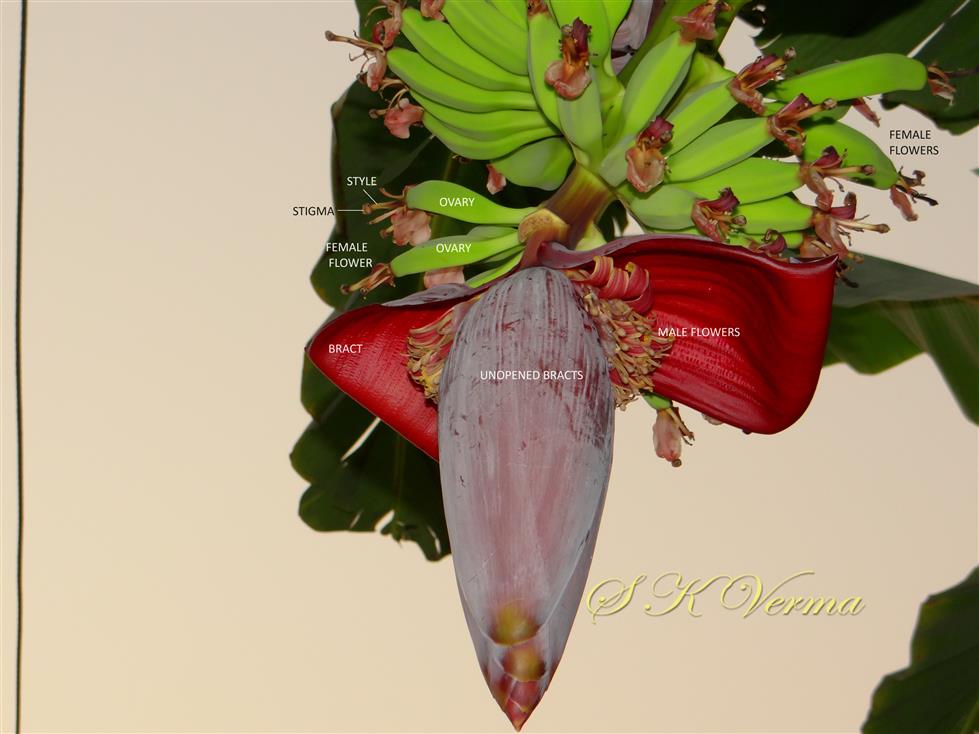
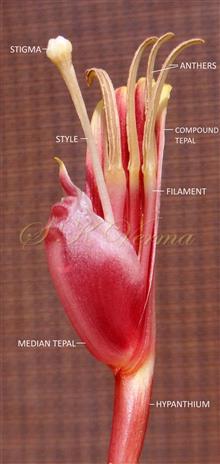
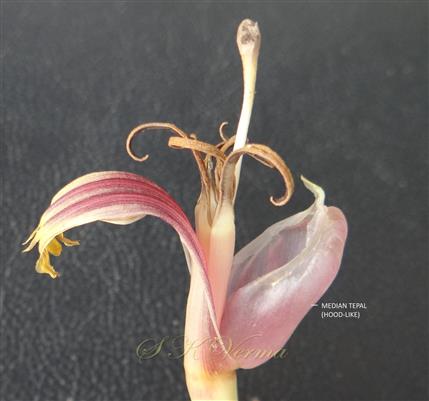
-DSC01247.jpg)
-DSC01229.jpg)
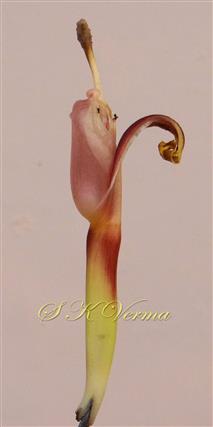
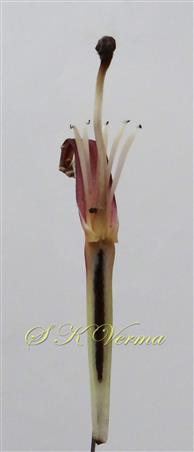

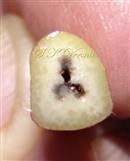
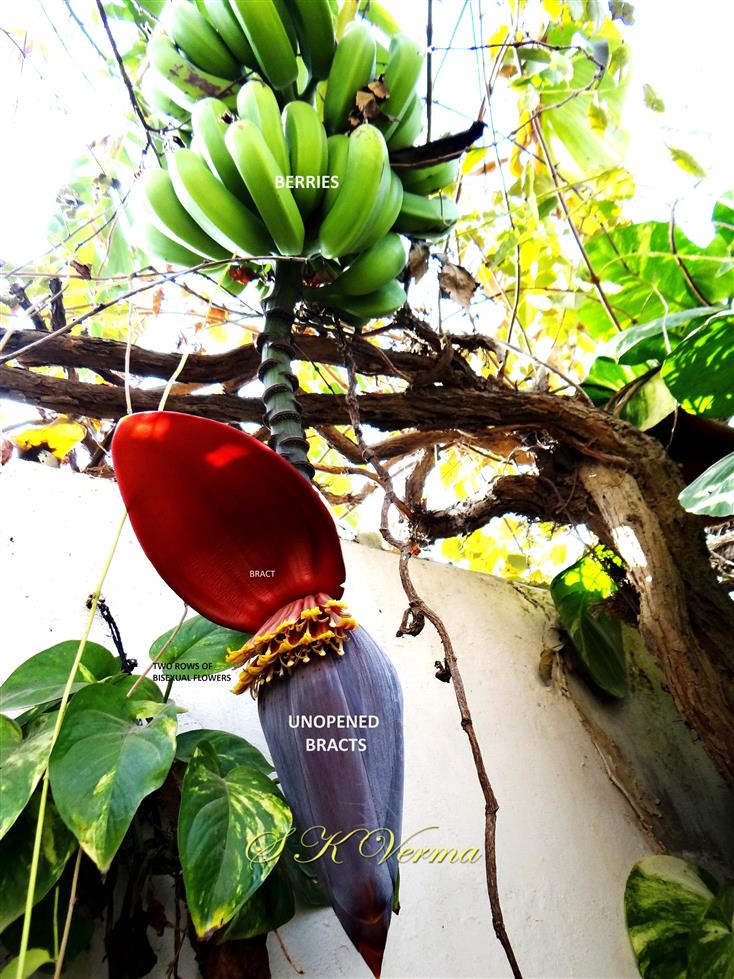
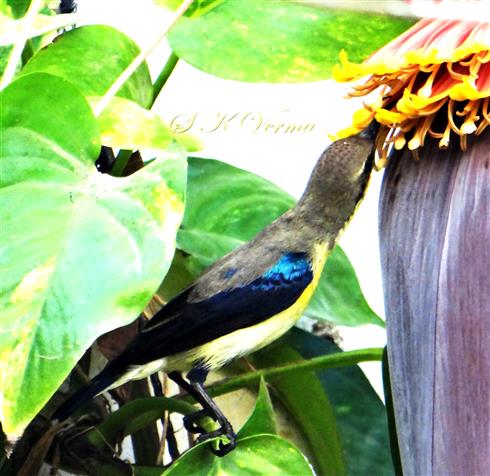


-DSC01116.jpg)




-DSC01247.jpg)
-DSC01229.jpg)





